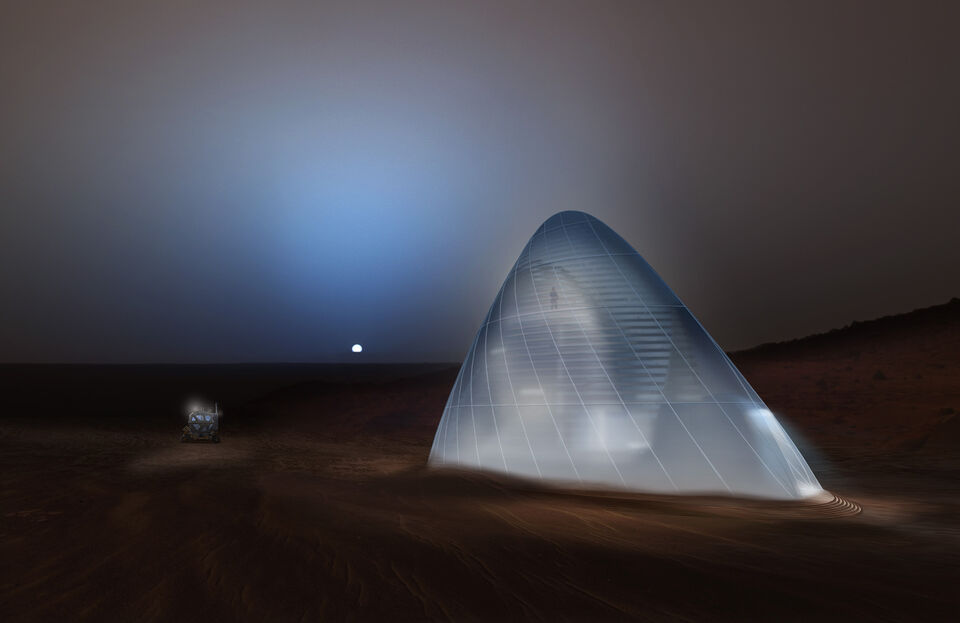Spraying icy water becomes 3D printing with ice jelly
At the end of this calendar year Arno Pronk, Assistant Professor at the Department of the Built Environment, is going to erect a 3d-printed ice pavilion in the Chinese city of Harbin. Pronk says that he has developed the appropriate technology for doing so and has also applied for a patent for it. In the distant future this could be a potential building method for accommodations on Mars.
According to Arno Pronk, the crucial step which makes it possible to place a 3D-printed ice pavilion in Harbin by the end of December, was the development of a jelly which not only properly binds the materials that are mixed in it, but which also functions as a lubricant. “That jelly ensures that the nozzle of the 3D printer does not get clogged”, says the Assistant Professor. "Meanwhile we have a applied for a patent for it."
Pronk says that he has first tested the jelly by adding cellulose. Pronk: "That is the same material which over the past few years we have mixed with ice water and which we then spray against an inflatable mold at very low outdoor temperatures. However, it has now turned out that we can also mix other materials in this jelly, such as steel fibers and sand. This provides new opportunities for building all kinds of structures in areas with low temperatures. In the distant future it may even be possible on Mars, which option is actually being researched by parties including Nasa.”
Continue reading below the video.
The ice pavilion that Pronk wants to build in Harbin at the end of December will have only modest dimensions, for that matter. Pronk: “Think of a structure with a size of three by three meters. Here at the department we have already practiced the printing of an ice wall 50 centimeters high. When building in Harbin we may also use an inflatable mold to give some support to the structure. All of that needs still to be investigated and studied, though.”
In October of this year sixteen students from the Harbin Institute of Technology are coming to Eindhoven to follow workshops at the Department of the Built Environment. In cooperation with the North Chinese university Pronk erected the Flamenco Ice Tower in Harbin in 2017. There the tried and tested method of spraying with cellulose-reinforced ice water was still applied.
Together with the Civil Engineering Department of the HIT Pronk is going to work on the design and construction of the 3D-printed ice pavilion in the first half of the new academic year. In the week from December 16 thru 22 the pavilion will be printed and it will be exhibited during the annual ice festival of Harbin.
Olympic Winter Games
For the near future Pronk intends to investigate what possible structures can be built during the Olympic Winter Games in Beijing in 2022. Pronk thinks that a symposium organized in Harbin by the IASS, the International Association for Shell and Spatial structures, could pave the way for this.
However, Pronk is also looking at a further point on the time horizon. He is seriously wondering whether the printing technology developed by his group also holds opportunities for linking up with research projects focusing on future missions to Mars. Particularly those focusing on the questions relating to the building of accommodations on site by means of materials that are already present on Mars. "Nasa among others is organizing international competitions aiming at this, for which you can register", says Pronk. "We are definitely interested in this as well."
For more information look on this site.




Discussion